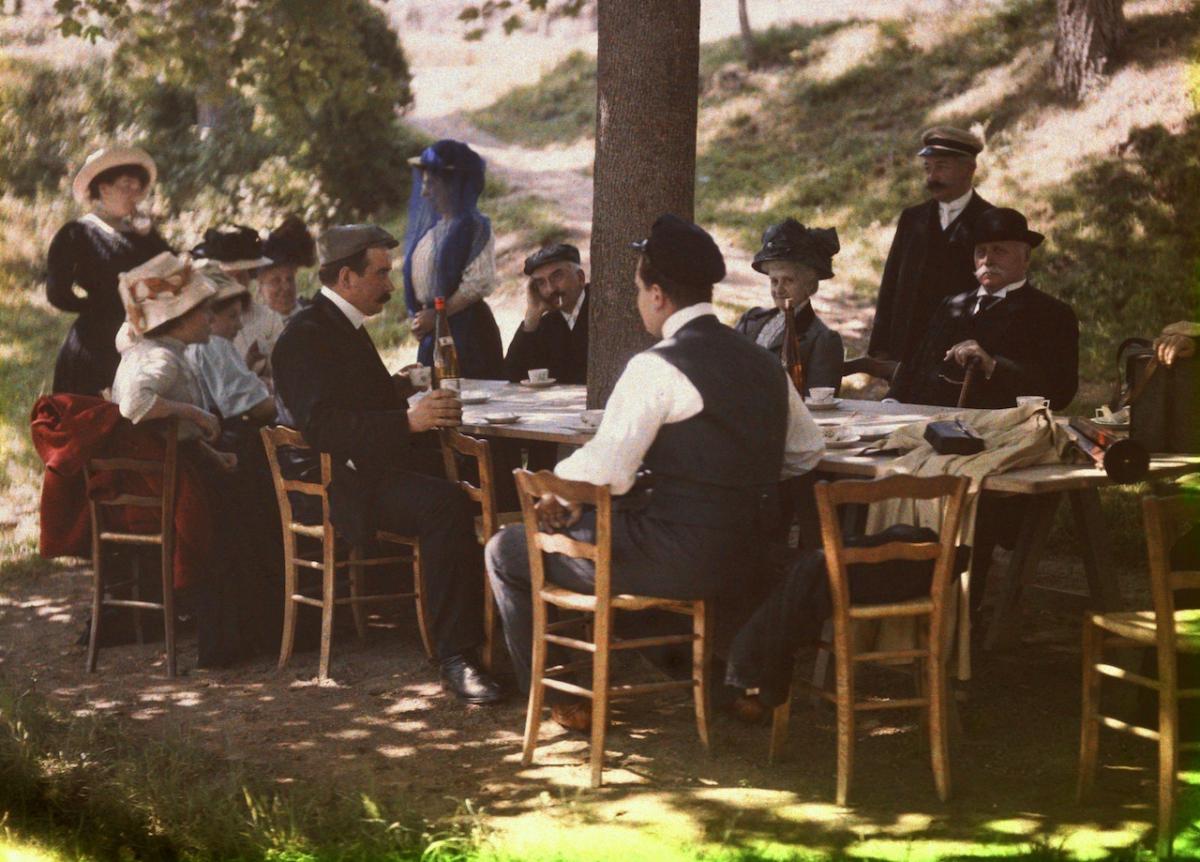 |
| Auguste et Louis Lumière en 1895 when the cinema was invented |
I am always wary of exhibitions that feature
light sensitive films in a museum space.
Films made to be projected in a darkened movie theatre, seen by a seated,
stationary audience just don’t translate to projections on white walls or
monitors in fully lit galleries. That said, after teaching silent and
experimental film on DVD with poor projection facilities for a whole semester I
could have sat for hours in the reconstructed theatre of the Grand Café
watching the 15 minute program from that auspicious December night in 1895. I
didn’t care about the gaudy décor, I was entranced by the experience of
watching the real deal, 35mm film being projected. The grain of the worn image,
the clarity of the light, the sound the projector in the background, none of it
can be replaced by video, digital or computer generated images. I am lucky to
have access to many places in Paris where I can see silent film projected, but
I wonder how many of the visitors to this exhibition will have seen such
wonders on screen? Unexpectedly, this is one of the great treats of the
Lumières exhibition now on display at the Grand Palais.
 |
| The first film, workers leaving the factory, 1895 |
This comprehensive exhibition of the
Lumières inventions is all but the transplant of the Lyon museum to the Grand
Palais in Paris. The rooms are filled with treasures – images, inventions, apparatuses,
documents and historical information on their technological developments of
which the cinema is just the beginning. In the factory, they made the cameras
for still images, the glass plates, the processing dyes, and all manner of
cameras, apparatuses and other technologies. In addition to the display of
their inventions, all of the extant Lumières films are exhibited in some way
throughout the exhibition, whether on interactive touch screens, in video
installations or in the Grand Café replica. The invented technologies
themselves are very beautiful objects. Made of wood and brass and glass, with
handles and lenses that can be seen and many times touc
hed, they are
fascinating to see in motion.
 |
| Repas familial Lumière en 1910 à la Ciotat (avec Louis Lumière Plaque Autochrome Lumière |
My favourite part of the exhibition were the
colour photographs. I had no idea that the Lumières extended their skills to
colour photographs. Of course I didn’t because this was thirty years before the
techniques were developed by others. And the resultant photographs are
absolutely gorgeous. The light in an image such as La neige à Chamonix, a winter landscape at day’s end is varied and
crystal clear, with the shadows of the wintry trees cast long and atmospherically
across the pink coloured snow. The image captures a sensitivity that is
marveled at in photographs made 30 years later. Other examples, such as Ciel d’orage are extremely painterly,
with the swelling clouds given three dimensionality by the clarity of the blue
sky, and Repas familial Lumière, en 1910 with
its dappled sunlight and bourgeoise lunching party is all but a repetition of
Renoir’s most famous painting, Le Bal du
Moulin de la Galette (1876). Equally as surprising was that the colours
were fast and had not degraded as did so many images from these early periods. Like
so many of the Lumières inventions, these exquisite images were way ahead of
their time.
The Lumières kept inventing way beyond the
capacity of the world to keep up with them. Even when there was no audience for
their images, they were inventing them, even when the technology had not or
could not yet be developped, the Lumières were there with a solution. It was
astounding to see their inventions of panorama, real 360 degree moving images.
And then they also invented 3D well before the capacity of technology to
produce the ideas. As inventors, the Lumière brothers did so much more than
invent the moving images, and anyone who thinks they know all there is to know
about the Lumières will still enjoy seeing the cinema in the context of this
vast body of work.
All images courtesy Institut Lumière
No comments:
Post a Comment